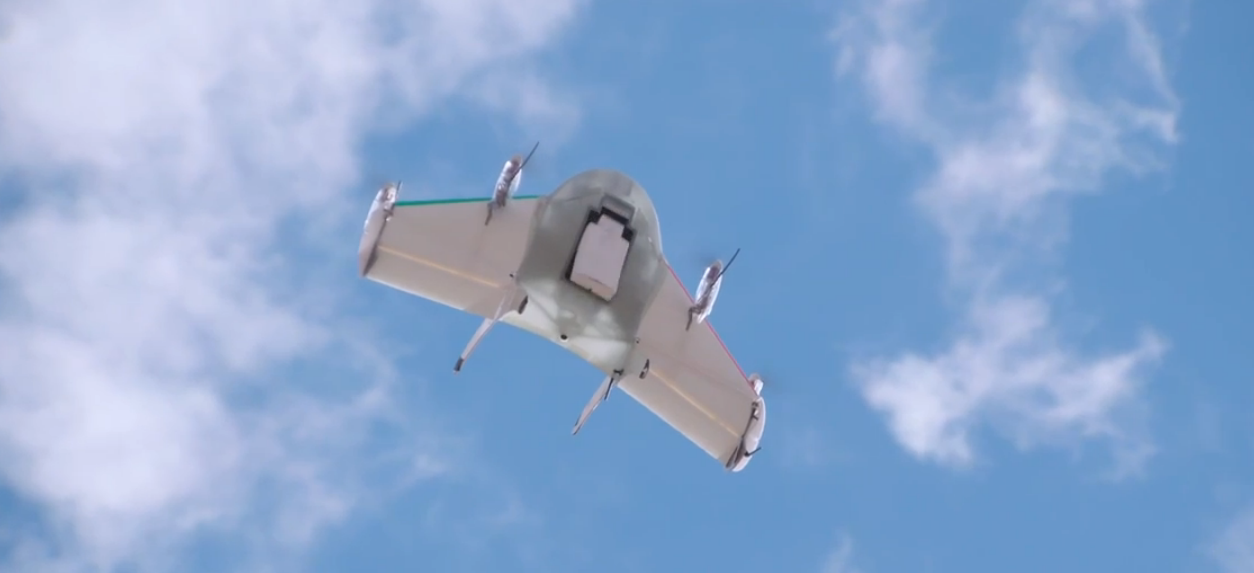
Project Wing may sound familiar: just in time for Christmas last year, Jeff Bezos gave 60 Minutes an exclusive sneak-peak at Amazon Prime Air, the retailer's own drone-based delivery initiative. While you may be keen to shout 'copycat!' Google's Project Wing has been quietly developed over the last two years, having started out as an initiative to deliver defibrillators to people having heart attacks (yes, really).
Google has dropped the heart-starter premise, though, in favor of delivering you stuff. Like dog food.
Google conducted a series of 30 test flights in Australia earlier this month, where commercial drone operation laws are more lax. Google has, of course, developed its own aircraft, and it is, to use the parlance of our times, freaking awesome. The design is a hybrid helicopter-delta-wing called a tail-sitter that takes off vertically before maneuvering itself horizontal for maximum velocity.
The drone's payload is housed in the underbelly of the vehicle, attached to a bundle of sensors known as the "egg." When the drone reaches its destination, the payload is dropped via a fishing line down to the ground, and when the "egg" detects the cargo has made contact with earth, it detaches from the package and is pulled back up into the drone. The drone never lands - it just hovers vertically while the delivery is completed, then flies back on its merry way to home base.
The amount of cargo these drones can hold seems to be, as with Amazon's prototypes, very, very small. Given that we're just now building electrically-driven drones that can carry even moderately sized camcorders, the notion of delivering something much larger than a big paperback book still seems a way off yet, something Google concedes, saying these drones are an indefinite number of "years" away from consumer viability.
Google hasn't even actually settled on a craft design, and like most things Google X, Project Wing is far from a sure thing even in the conceptual sense. Still, pretty neat stuff. The full Atlantic piece is pretty long, but it's a good read, so check it out.
The drone's payload is housed in the underbelly of the vehicle, attached to a bundle of sensors known as the "egg." When the drone reaches its destination, the payload is dropped via a fishing line down to the ground, and when the "egg" detects the cargo has made contact with earth, it detaches from the package and is pulled back up into the drone. The drone never lands - it just hovers vertically while the delivery is completed, then flies back on its merry way to home base.
The amount of cargo these drones can hold seems to be, as with Amazon's prototypes, very, very small. Given that we're just now building electrically-driven drones that can carry even moderately sized camcorders, the notion of delivering something much larger than a big paperback book still seems a way off yet, something Google concedes, saying these drones are an indefinite number of "years" away from consumer viability.
Google hasn't even actually settled on a craft design, and like most things Google X, Project Wing is far from a sure thing even in the conceptual sense. Still, pretty neat stuff. The full Atlantic piece is pretty long, but it's a good read, so check it out.
Got questions? Feel free to ask in the comments section below. Thank You...
528
183.58 HZ
Praise
Praise

0 comments :
Post a Comment